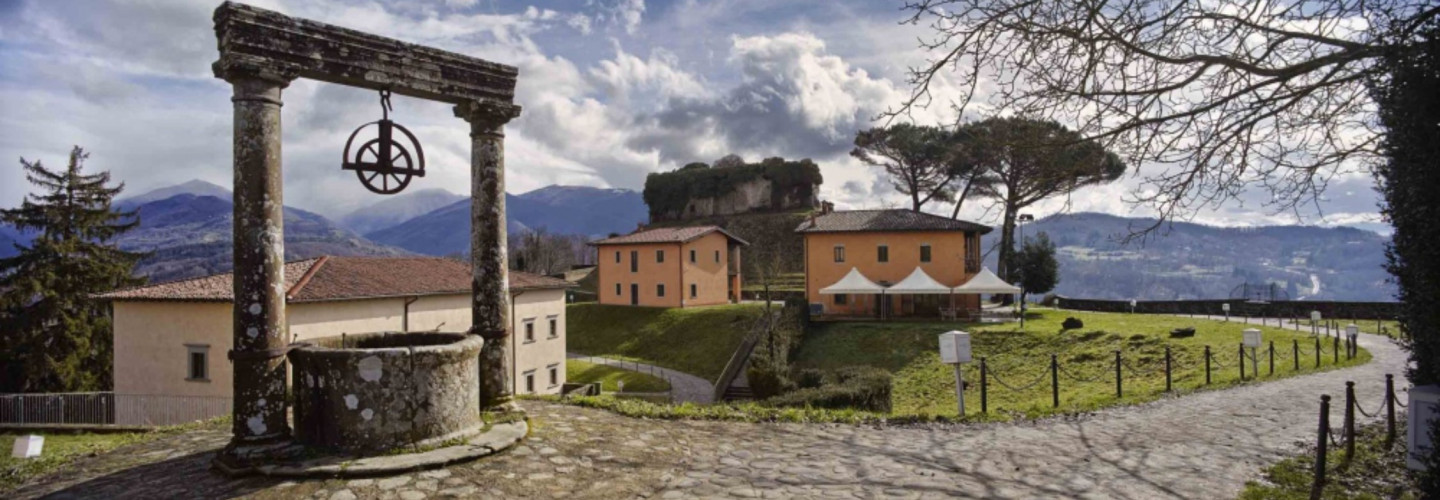Monte Alfonso fortress

It was built by the will of Alfonso II d’Este between 1579 and 1586, on a project by Marc’Antonio Pasi, to defend Castelnuovo Garfagnana and the Este territory from the Republic of Lucca. It was the Garfagnini themselves who contributed, with the huge sum of 30,000 scudi, to the realization.
The complex – with a wall of 1150 meters, 7 bulwarks and two doors – had houses inside: some of the sixteenth-century specimens remain the captain’s house, the accommodation of the troops, the stone well and the casemate bastion. The Este coat of arms still stands on the main door.
According to a popular legend, the Fortress would be connected through an underground gallery to the Rocca Ariostesca di Castelnuovo, a secret passage that, in the event of a siege of the village, would have allowed citizens to take refuge within the walls.
After hosting prisons in the 16th century, in the 1900s it became the summer residence of the Italian – Scottish Bechelli family, who transformed one of the buildings into a modern Liberty villa.

